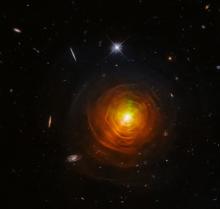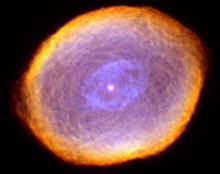Listen to today's episode of StarDate on the web the same day it airs in high-quality streaming audio without any extra ads or announcements. Choose a $8 one-month pass, or listen every day for a year for just $30.
You are here
Cloudy Skies
Before a star like the Sun becomes a star like the Sun, it goes through a busy infancy. It forms from a collapsing cloud of gas and dust. Most of the material clumps together in the center, getting hotter and hotter, forming the baby star. Much of the remaining gas and dust forms a disk around the star. And bigger clouds of material from the star’s nursery lurk nearby.
A couple of star-cloud pairings are in the west and southwest as night falls. Both clouds vary in brightness as a result of the activity around the young stars.
T Tauri is near the top right point of the “V” that forms the face of Taurus, the bull. It’s only a few hundred thousand years old, so it’s still coming together — it’s not actually shining as a true star.
Next door to it is Hind’s Variable Nebula. It shines by reflecting light from T Tauri. The nebula changes brightness over a period of weeks or months — the result of changes in the star and its encircling disk.
The star R Monocerotis is to the upper left of Orion. It’s in the same stage of life as T Tauri.
A triangular nebula points away from the star. It’s known as Hubble’s Variable Nebula after Edwin Hubble, for whom Hubble Space Telescope is named. The nebula varies when dense blobs of dust pass in front R Monocerotis, casting shadows.
The nebula was the subject of the first photograph taken with the giant Palomar Telescope in California, 70 years ago. The picture was taken by Edwin Hubble.
Script by Damond Benningfield






